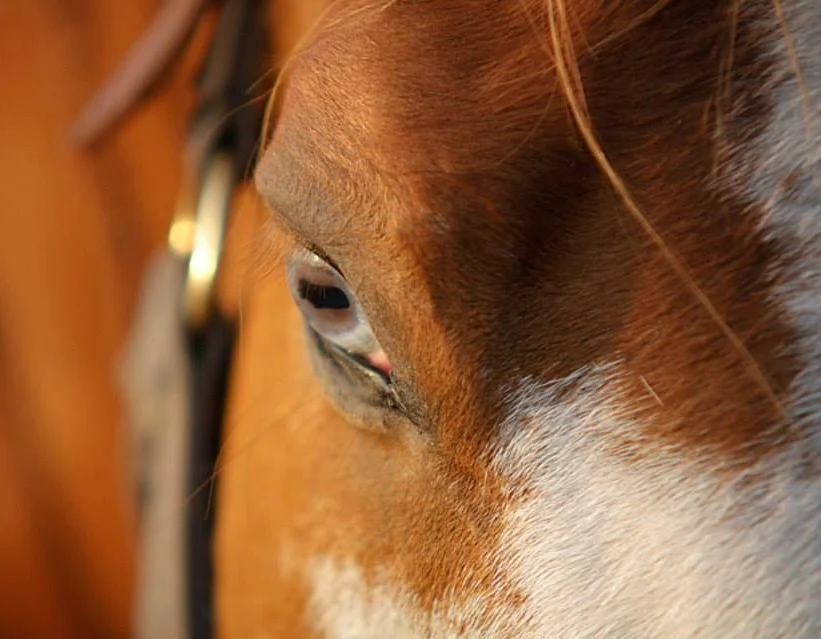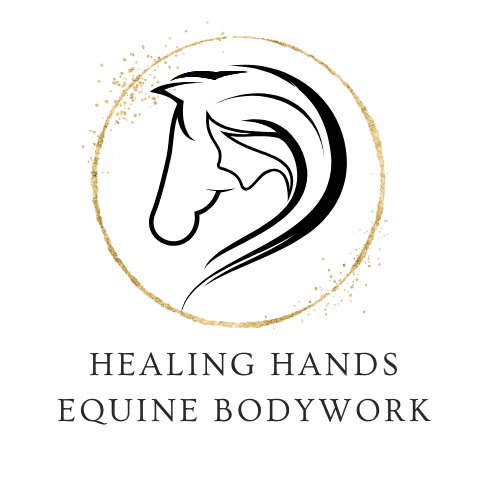
Know your tools
Every discipline has their rules - rules about age, where the horse should be training-wise, what tack is to be used, what attire the rider is expected to wear. It really can be quite mind-boggling!
One thing I see over and over again - people use certain tools, such as bits, because it is expected at a certain time in the horse's training, not because it is the best tool to use to accomplish a specific goal.
My main point about this subject is that your tools have a direct effect on your horse's body.
Here are some important questions we should all ask ourselves:
- Does this tool help my horse understand my request?
- Does it help me keep my horse relaxed and connected?
- Do I know how to use it appropriately?
- Am I using it to gloss over a hole in my training program?
- How does it effect my horse's body in general?
- Does it create tension or strain somewhere?
- Do I have to adjust my own riding by using it?
Let's take bits with shanks - they certainly have their place in a horse's education. But a shank will not only amplify the signal, it also delivers the signal much faster. So would you want to place this "fast and loud" message bearer in the hands of someone who has not developed an independent seat and balances on the reins because you are showing a horse at a certain age in a certain discipline?
Should it be used "to slow the horse" because we have not taken the time to develop the basics?
Should we use this bit on a horse who has trouble bending the joints in the hindlegs since it has such a strong effect on those joints? What if we have not developed the tilt of the pelvis, evenly on both sides and a certain degree of collection? What if we have not understood that collection is not about head position but involves the entire body? And if we do, how does it impact not just those joints, but in turn the rest of the horse's body?
Not only does the horse's body tell the story, but so does your horse's behavior.
- Open mouths
- Clamped mouths
- Swishing tails
- Tense muscles
- Short steps
- a worried eye
- Tight lips
- Won't move off the leg
- over-reacts to aids
- won't respond to aids
- runs through the bridle
- won't slow down
- won't go forward
- turns like a steel pipe
It is the rare case where a stronger message becomes a clearer message to your horse. And I have never seen a positive outcome from restricting a horse. Restricting him opening his mouth by using tight nose bands, lifting his head (as in the case of draw reins), restricting forward with the use of strong bits and long shanks. It only serves us, serves us to present a picture that is actually not really there. A horse truly connected to you doesn't need to have his mouth tied shut, or have a certain bit to get him to slow down.
Every time you ignore or prevent your horse from being able to "have his say", you only create the illusion of success.
Those holes will show up time after time - either by damaging your horse's body or by creating mental and emotional resistance.
- Stiff joints
- Tight muscles such as the back or hamstrings
- restricted mobility such as in the shoulders
- resistance to the bit
- "dead mouth"
- lack of responsiveness to your aids
If any of this sounds familiar, you can change it.
You can change it by getting to know your horse's body, by evaluating WHY you are using certain tack, by valuing your horse's feedback and by engaging professionals who put your horse's well-being at the top of their list.
I absolutely know that you will have your decisions questioned, you will encounter people telling you that if you only used THIS THING you would reach your goal quicker, have your horse listen better. And by all means, listen to them. But please evaluate their motives.
If this approach is about MAKING the horse do it versus preparing your horse and CAUSING him to do what you asked, it's not progress in your training.
One of my instructors hammered this into my head over and over again:
Prepare the horse, prepare yourself, then and ONLY then ask
This means we sometimes have to take a step back. Really drill down into the problem we are currently experiencing, listen to our horse. And most of all realize that his feedback and valuing it is the best tool we have.
Riding is a conversation, if you consistently tell your partner to shut up, it becomes a lecture.
Tools are there to facilitate communication - so have the conversation with your horse that matters.
Look into my eyes and see me
I might be dating myself here, but Bryan Adam's love ballad "Look Into My Eyes" has always been one of my favorite songs.
Look into my eyes – you will see
What you mean to me.
Search your heart, search your soul
And when you find me there you'll search no more
It's almost impossible to look into a horse's eye and not see his entire being reflected. Their ability to communicate with their body is just incredible. We as humans tend to use words as our main tool to express what we want to say. We sometimes forget that NON-VERBAL communication makes up the majority of how even we communicate and our horses are masters at reading us - all the time.
But non-verbal communication isn't just body language like gestures. Here are just a couple examples - things we don't necessarily think about:
- The space between the two individuals - we all have had a conversation at a party where the other person crowded us? And it makes us feel really uncomfortable, annoyed, frustrated? I can tell you, every horse has their own personal space - their bubble so to speak. And we need to be aware of how we enter it. Or if your horse WANTS you to enter it. Be mindful of that. So many times we ask them to respect our space yet we don't respect theirs.
- How we present ourselves, how we dress, what jewelry we wear, if we comb our hair or wear make-up. My grandmother always said that we dress for others, not for ourselves. My grandfather never left the house without wearing a tie. Granted, they are definetely from a different generation. But this was one of their ways to communicate respect and also says quite a bit about them, wouldn't you agree? The way we show up at the barn, the attention we give to our tack, the quality of tack we use - it all speaks volumes. Take saddle fit for instance - your horse will have a lot to say if the saddle does not fit! How about the bit you use or how it fits - have you really thought about why you are using specific tools and what impact they have on a horse's body? He won't care if your breeches aren't the most flattering to look at, but he WILL care if you don't pay attention to how your tools impact him.
- The speed of our speech - you know how you start racing when you are unsure of the topic or nervous during a presentation? Or how your speech gets clipped and loud when you are frustrated? I know that when I get unsure, I start babbling. Word garbage - we've all done it, right? Just fill the space with SOMETHING! But the most clear message is in the space within - between the sounds. That's where our horses live - the silent space within. Take some time when you communicate with your horse. I recently mentioned to a friend that my mare really taught me the value of waiting - waiting for her to find the answer. I can't tell you what a difference it has made in our partnership.
- The speed we move at, the stiffness or looseness of our bodies, our posture - this can communicate really clearly the state of our mind. It can signal if we are tired, angry, depressed, loving life, needing a hug. It can also show that we are somewhere else entirely - our bodies might have shown up, but our minds might be miles away. Our horses don't live in this state at all most of the time, the only time they check out is if they have been totally overwhelmed by fear and panic. So if they see this in you, how could they possibly perceive you as trustworthy?
- The soft or hard look in our eye. Try it out for yourself sometime - look at your horse with soft eyes and see how your body feels. Then look hard at him, not mean, just increase your focus, narrow the field of your vision so to speak. You can definetely feel a tension going down your spine. That tension gets communicated and amplified - your horse feels it.
- The depth of our breath - when we get scared, we hold our breath. When we are angry, we breath very shallow. By changing our breath, we can change ourselves.
I read this article and it stated that verbal communication was fast, clear and caused less confusion than non-verbal communication. But I have to say, I disagree with this.
MORE CONFUSION HAS BEEN CAUSED BY PEOPLE SAYING THINGS THEY DID NOT MEAN, AND MEANING THINGS THEY DID NOT SAY.
How many times has someone said to you - IT'S SO GOOD TO SEE YOU! - and yet, you knew they didn't mean a word of it because their body language said the exact opposite?
I found that learning to read body language and also becoming aware of my own has really helped me become much more clear in how I present myself to horses and how they respond to me.
It becomes a WHOLE BODY EXPERIENCE very similar to how horses operate.
I am now so aware of how I enter a stall, put on a halter, ask the horse to step back or move over, pick up his feet, ask to enter their space and touch them in areas they are typically defensive about. There is no ambiguity between me and the horse - no misunderstanding, no guessing. There is, however, mutual respect and trust. I honor their integrity and honesty, they in turn honor my honesty by allowing me in where doors once were closed tight.
Look into your horse's eyes. Are they hard, soft, worried, angry? How can you adjust yourself to cause a change? If you become consistent in your non-verbal communication with your horse, your entire relationship will change. He will learn to trust - what you say is what you mean. He will be able to rely on you. Your connection will be deep and honest. He will give you his all, even when he is scared, confused, not feeling well. It's connection.
Look into my eyes - and you will see.
If you have enjoyed reading this, leave me a comment. If you would like to learn more about what we do here at Healing Hands, give me a call!


